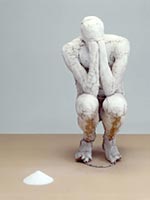|
Eustathius explained that the people ignorant of salt is a category of distant inland foreigners who ignore the habits of Achaeans and would benefit from compensating for this ignorance. Therefore, in Homer’s mind the salt, as linked to the sea, would have served as an emblem of travelling by sea, which required special skills of navigation, and hence as allegory of the culture of commerce and exchange, which results into civilization by Hellenic standards.When Eustathius was writing in about 1180,the saltless people were the Muslims (though the scope of his research did not touch on this matter).Eustathius was teacher of rhetoric in Constantinople’s Patriarchal school, which was  the leading centre of education.Ironically,the civilizing influences filtering into Islam from the leading cities of Byzantium – Alexandria, Antioch and Constantinople – in the course of centuries gave the Muslims the dynamic energy for subsequently conquering the Byzantine Empire.In the 20th century the saltless people would be those who have not shed salty tears in response to the World Wars and the relevant Holocausts. Some such idea would have prompted Miroslaw Balka to create his Salt Seller [fig2] to mourn for the extermination of the undesirables – Jews, Slavs, Gypsies, the disabled and homosexuals – by the Nazis. Caught with his knees crouched and hands pressed against his eyes, the Salt Seller remains still beside a mound of salt, crystallized tears, which is all he has left to sell. the leading centre of education.Ironically,the civilizing influences filtering into Islam from the leading cities of Byzantium – Alexandria, Antioch and Constantinople – in the course of centuries gave the Muslims the dynamic energy for subsequently conquering the Byzantine Empire.In the 20th century the saltless people would be those who have not shed salty tears in response to the World Wars and the relevant Holocausts. Some such idea would have prompted Miroslaw Balka to create his Salt Seller [fig2] to mourn for the extermination of the undesirables – Jews, Slavs, Gypsies, the disabled and homosexuals – by the Nazis. Caught with his knees crouched and hands pressed against his eyes, the Salt Seller remains still beside a mound of salt, crystallized tears, which is all he has left to sell.
A figure strongly associated to salt was Odysseus. To feign madness, by which to avoid conscription to the Trojan War, Odysseus sowed salt, which would render his field barren (Apollodorus 1921:E.iii.7). He gave up this trick to save his newborn son that the recruiters planted in the field he was plowing. Much after the war that he won, he was required to appease Poseidon, whom he transgressed by putting out the single eye of his dear son Polyphemos. Tiresias advised Odysseus to travel away from home in a land where the sea is unknown and so is as far from Greece as can be imagined. In other words, he had to travel extensively landwards, rather than in the sea, with whose hazards he was familiar, until proof of his change of habit is given by the local people’s mistaking of the most commonplace object to be found in Greece – the oar. |

